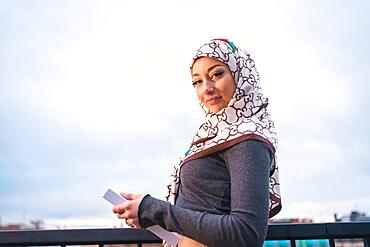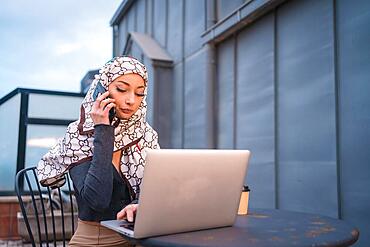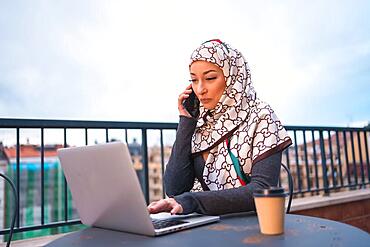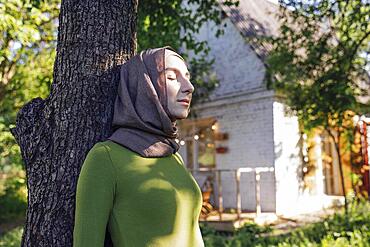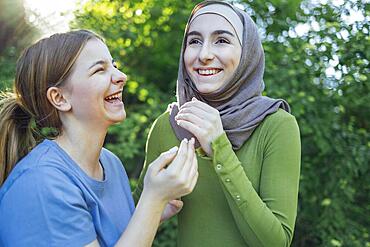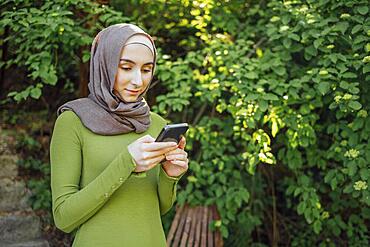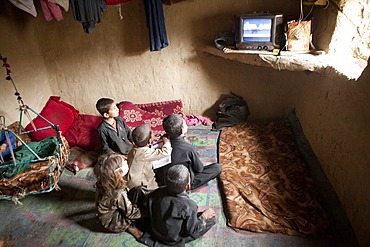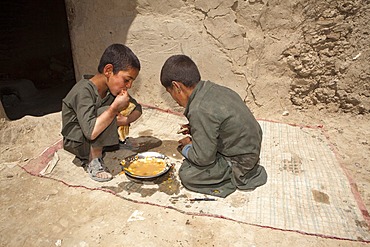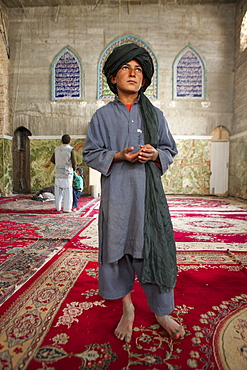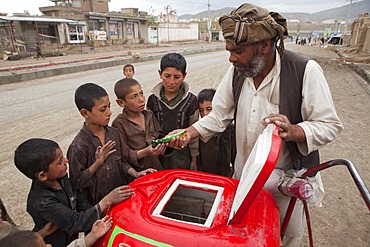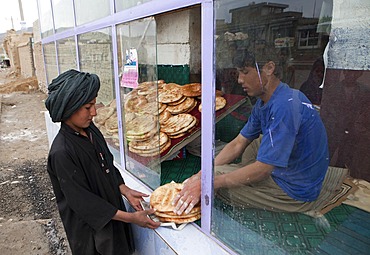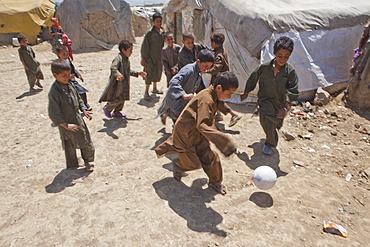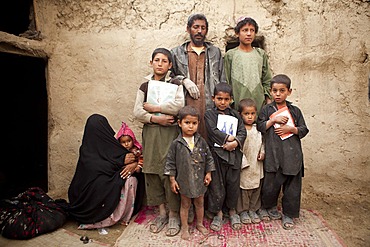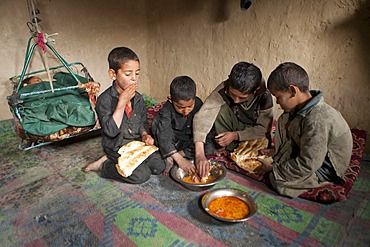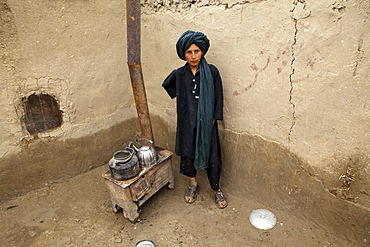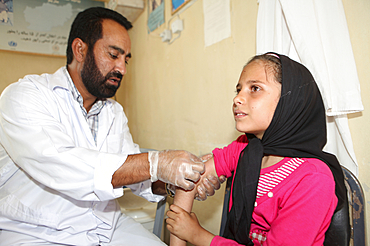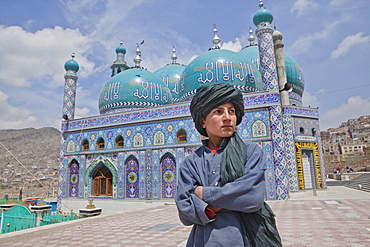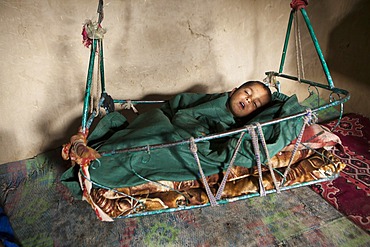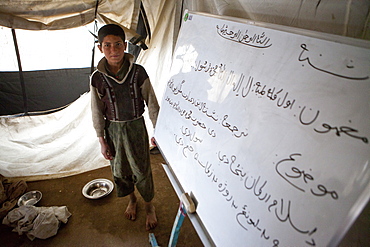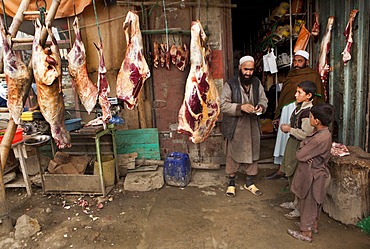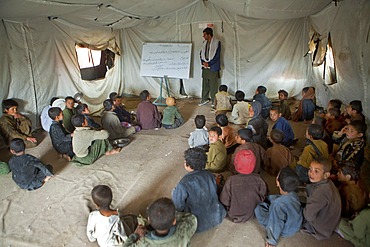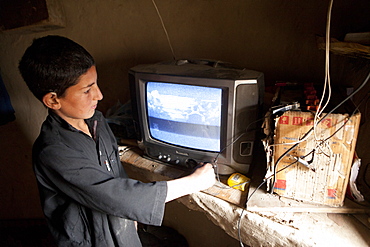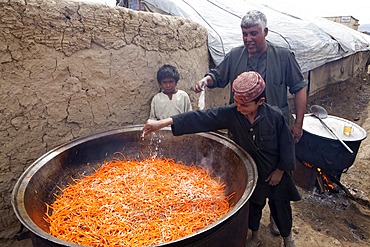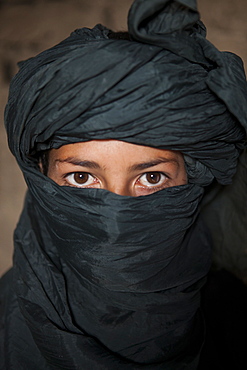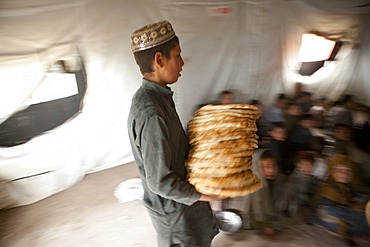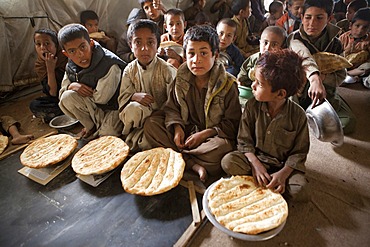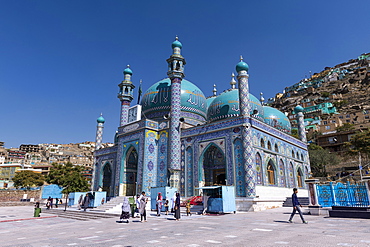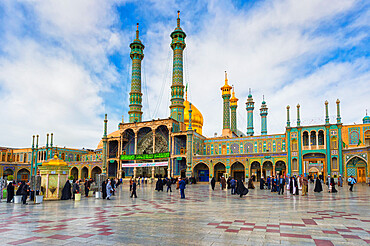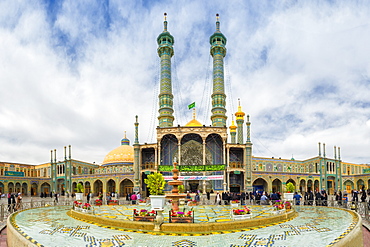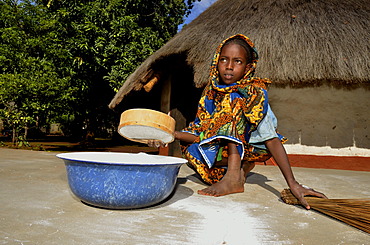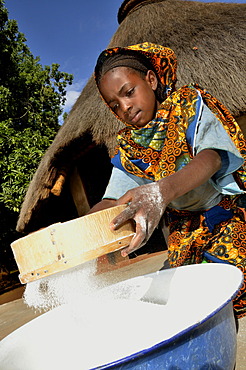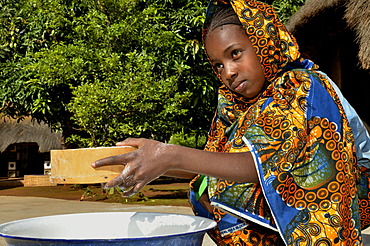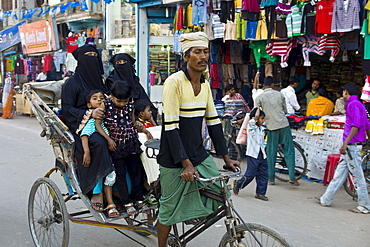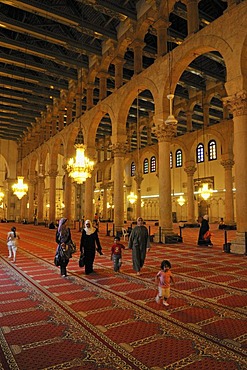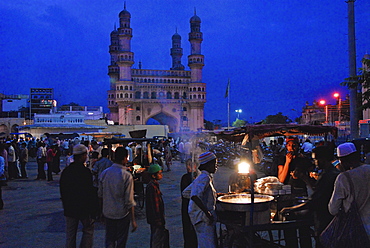Recent searches
Loading...
860-292479 - Traditional Muslim children: girls wear abayas, boys wear kofias, traditional hats, on their way to school in the narrow streets of Stone Town, capital of Zanzibar, Tanzania.
832-404204 - Portrait of an Arab girl with a white veil with a book on the terrace of a coffe shop, looking at the city from a balcony
832-404203 - Arab girl with a white veil at the computer on the terrace of a coffee shop, with the computer and talking on the phone
832-404202 - Arab girl with a white veil at the computer on the terrace of a coffee shop, with the computer and talking on the phone. Modern young man with new technologies
832-400355 - Muslim teen girl hugging a tree. Close up portrait of a young female in a hijab and casual clothes in the park. Protecting the environment and caring for plants concept
832-400334 - Multiethnic group of girls wearing casual clothes and traditional hijab bonding and having fun outdoors. Three young teen girls in garden cafe drinking tea or coffee
832-400325 - Muslim young attractive gardener at work, take care of green plants, working in retro garden shop
832-400315 - Pretty young middle eastern woman wearing hijab using laptop at home. Muslim girl preparing for entry exams. Home education and online studing concept
832-400314 - Multiethnic group of girls wearing casual clothes and traditional hijab bonding and having fun outdoors. Three young teen girls in garden cafe drinking tea or coffee
832-400306 - Strong female friendship. Happy two teen girls best friends holding hands and hugging while standing in front of park. Multiethnical friends
832-400296 - Rear view of multiracial young teen female friends resting in the park after sport training and having fun together. Diversity, sport and friendship concept
832-400286 - Modern Muslim girl student wearing hijab in the park, holding a phone in her hand and smiling
1366-117 - Wadi al Hitan, Faiyum, Egypt. February 20, 2022. Village women bringing their crop to market with a donkey cart.
832-396790 - Humayun's Tomb famous tourist attraction destination. Delhi, India, Asia
1350-5946 - Afghan children at a icecream seller in kabul
1350-5952 - Afghan children playing in a slum in KabulAfghan children are wrestling in kabul
1350-5955 - Afghan family living as displaced people in a slum in kabul
1350-5934 - Afghan family living as displaced people in a slum in kabul
1350-5957 - Afghan boy in front of a shia mosque in kabul
1178-41915 - Mixed Race girl wearing heart-shape sunglasses and headscarf texting
1348-2898 - Students attending their open air classes at Doodhpathri in Budgam district, Kashmir, India.
1348-2899 - Students attending their open air classes at Doodhpathri in Budgam district, Kashmir, India.
1348-2901 - Students attending their open air classes at Doodhpathri in Budgam district, Kashmir, India.
1348-2900 - Students attending their open air classes at Doodhpathri in Budgam district, Kashmir, India.
1348-2902 - Students attending their open air classes at Doodhpathri in Budgam district, Kashmir, India.
1350-2662 - Children in the madrassah in the Tafrout region in the Anti-Atlas
1184-5771 - Spiral minaret of the Great Mosque of Samarra, UNESCO World Heritage Site, Samarra, Iraq, Middle East
1184-5630 - Boys in a Medressa with holy Quran, Kano, Kano state, Nigeria, West Africa, Africa
1184-5629 - Boys in a Medressa with holy Quran, Kano, Kano state, Nigeria, West Africa, Africa
1104-1520 - Washing drying on banks of Gomti River, Lucknow, Uttar Pradesh, India, Asia
1184-4363 - Entrance to the Hazrat Shah Jalal Mosque and tomb, Sylhet, Bangladesh, Asia
1184-3517 - Sakhi Shah-e Mardan Shrine (Ziyarat-e Sakhi), Kabul, Afghanistan, Asia
809-7925 - Muslim children learning Quran at Islamic school, Ho Chi Minh City, Vietnam, Indochina, Southeast Asia, Asia
1131-1342 - Hazrat-e Masumeh, Shrine of Fatima al-Masumeh, Qom, Iran, Middle East
1131-1341 - Hazrat-e Masumeh, Shrine of Fatima al-Masumeh, Qom, Iran, Middle East
1131-1328 - Masjed-e Imam Mosque at sunset, Maydam-e Iman square, UNESCO World Heritage Site, Esfahan, Iran, Middle East
1131-1326 - Masjed-e Imam Mosque at sunset, Maydam-e Iman square, UNESCO World Heritage Site, Esfahan, Iran, Middle East
1131-1325 - Masjed-e Imam Mosque, Maydam-e Iman square, UNESCO World Heritage Site, Esfahan, Iran, Middle East
809-7743 - Nurunnaim Mosque, Muslim children learning at Islamic school, Phnom Penh, Cambodia, Indochina, Southeast Asia, Asia
1247-141 - Sunset at Jama Masjid, Old Delhi, India, Asia
1247-146 - Sunset at Jama Masjid, Old Delhi, India, Asia
1111-46 - Muslim man washing hands and feet before prayer time, Jama Masjid, one of the largest mosques in India, South Asia
832-369171 - Young girl in the village of Idool, near Ngaoundéré, Cameroon, Central Africa, Africa
832-369174 - Young girl in the village of Idool sifting flour, near Ngaoundéré, Cameroon, Central Africa, Africa
832-369173 - Young girl in the village of Idool sifting flour, near Ngaoundéré, Cameroon, Central Africa, Africa
832-369172 - Young girl in the village of Idool sifting flour, near Ngaoundéré, Cameroon, Central Africa, Africa
832-370856 - Bar Mitzvah celebration at the Western or Wailing Wall in the direction of the Jewish Quarter, boy is carrying the Torah scroll with the help of his father, Muslim Quarter, Old City, Jerusalem, Israel, Middle East
832-369175 - Children in the village of Idool, near Ngaoundéré, Cameroon, Central Africa, Africa
1161-4340 - Street scene in holy city of Varanasi, young muslim women in black burkhas ride with their children in rickshaw, Benares, Northern India
1161-4441 - Street scene in holy city of Varanasi, young muslim women in black burkhas shopping with their children, Benares, Northern India
1161-4457 - Muslim woman and child travel by rickshaw in crowded street scene in city of Varanasi, Benares, Northern India
1161-4580 - Indian boy at Agra Fort, 17th Century residence of Great Mughals and Mughal fort in Agra, Northern India
832-140731 - Interior of the Umayyad Mosque at Damascus, Unesco World Heritage Site, Syria, Middle East, West Asia
1113-91543 - Girl with blue Kanga cloth in front of coral stone house, Jambiani village, Zanzibar, Tanzania, East Africa
1113-91549 - Traditional Ukili Plaiting, date palm leaves get braid into bags, craftwork project Moto, cooperative near Kisomanga (Uroa), east coast, Zanzibar, Tanzania, East Africa
1113-44811 - Muslim girl, Jambiani, Zanzibar, Tanzania, Africa
1113-18543 - Muslims at nightmarket near Charminar at ramadan, Hyderabad, Andhra Pradesh, India, Asia
1113-18540 - Muslim women wearing a chador at a streetmarket in front of Charminar, Hyderabad, Andhra Pradesh, India, Asia
1113-18544 - Muslims at nightmarket near Charminar at ramadan, Hyderabad, Andhra Pradesh, India, Asia
809-5175 - Girls studying in a medersa (koranic school), Fatehpur Sikri, Uttar Pradesh, India, Asia
809-5176 - Girls studying in a medersa (koranic school), Fatehpur Sikri, Uttar Pradesh, India, Asia
809-5174 - Girls learning Arabic in a medersa (koranic school), Fatehpur Sikri, Uttar Pradesh, India, Asia
809-5173 - Girls learning Arabic in a medersa (koranic school), Fatehpur Sikri, Uttar Pradesh, India, Asia
857-68851 - Esfahan, Iran - February, 2008: School girls dressed in pink visiting Imam Mosque. The 17th century mosque was built by Shah Abbas I and is considered one of the most beautiful in world with is blue-tile mosaic design and massive dome.
857-58044 - Children watching surfing on the beach of Socotra Island, Yemen
857-33935 - Tajik women proudly pose with their children, burqa's thrown back, in front of the main entrance to the Blue Mosque, Mazar-i-Sharif, Balkh Province. Wednesday mornings are reserved for women to come and worship at the mosque. Elaborate tilework and decorated spires adorn the mosque, also known as the Shrine of Hazrat Ali (Hazrat Ali was the son-in-law of the prophet Mohammed), who is believed to be buried here. The shrine, of particular importance for Afghanistan's Shi'ite Muslims, was first built in the 12th century, destroyed by Genghis Khan, and rebuilt in 1481. The current mosque, considered by some to be one of the most beautiful in Central Asia, is a modern restoration.
1188-331 - Education, indonesia. Mosque school in a village in east jav
1188-147 - Education, indonesia. Mosque school in a village in east jav
1194-2070 - Indonesia a kindergarten in banda aceh which lost many of children to tsunami, been rebuilt. schools director halimah anwar bustam (seen here in foreground) describes horrors suffered: area kids came from completely flattened by waves. On that fateful sunday children were in their homes, or many were already on beach having. So many died that morning. It devastating. Only we getting things back together, very grateful to helping with reconstruction of damaged building. staff give up a portion of their (already) salaries to sponsor poor children from outlying villages to come to school. structure includes offices staff, a library, prayer room wheelchair accessible classroom.__ Photograph taken in banda aceh, -december 2006, 2 years after tsunami of december 26th 2004 devasted much of coastal region. Taken to illustrate reconstruction work projects of (catholic relief services) of sponsored photo tour
1194-2067 - Indonesia growth monitoring (baby weighing) at a posyandu, or mother-child temporary health post in village of paya lumpat. Photograph taken in meulaboh, aceh province -december 2006, 2 years after tsunami of december 26th 2004 devastated much of coastal region. Taken to illustrate reconstruction work projects of (catholic relief services) of sponsored photo tour
1194-2066 - Indonesia growth monitoring (baby weighing) at a posyandu, or mother-child temporary health post in village of paya lumpat. Photograph taken in meulaboh, aceh province -december 2006, 2 years after tsunami of december 26th 2004 devastated much of coastal region. Taken to illustrate reconstruction work projects of (catholic relief services) of sponsored photo tour
1195-12 - Kenya,dadaab refugees camp, somalian border gtz hospital ,the camps were set up around the town of dadaab beginning in 1991 when civil wars erupted on a grand scale in somalia (16 rival factions were involved). The wars, along with a prolonged drought, forced more than 900,000 somalis to flee to neighboring countries. Approximately 400,000 of them, many of whom were in a serious state of exhaustion and starvation, took refuge in kenya. Since then, a majority have returned to their country. However, some 131,000 somalis remain in kenya, and 110,000 are in dadaab, along with some sudanese, ugandans, and about 3,000 ethiopians women waiting the receive care from gtz ngo at the local hospital
1194-1063 - Thailand our school muslim school for burmese refugees, mae sot

